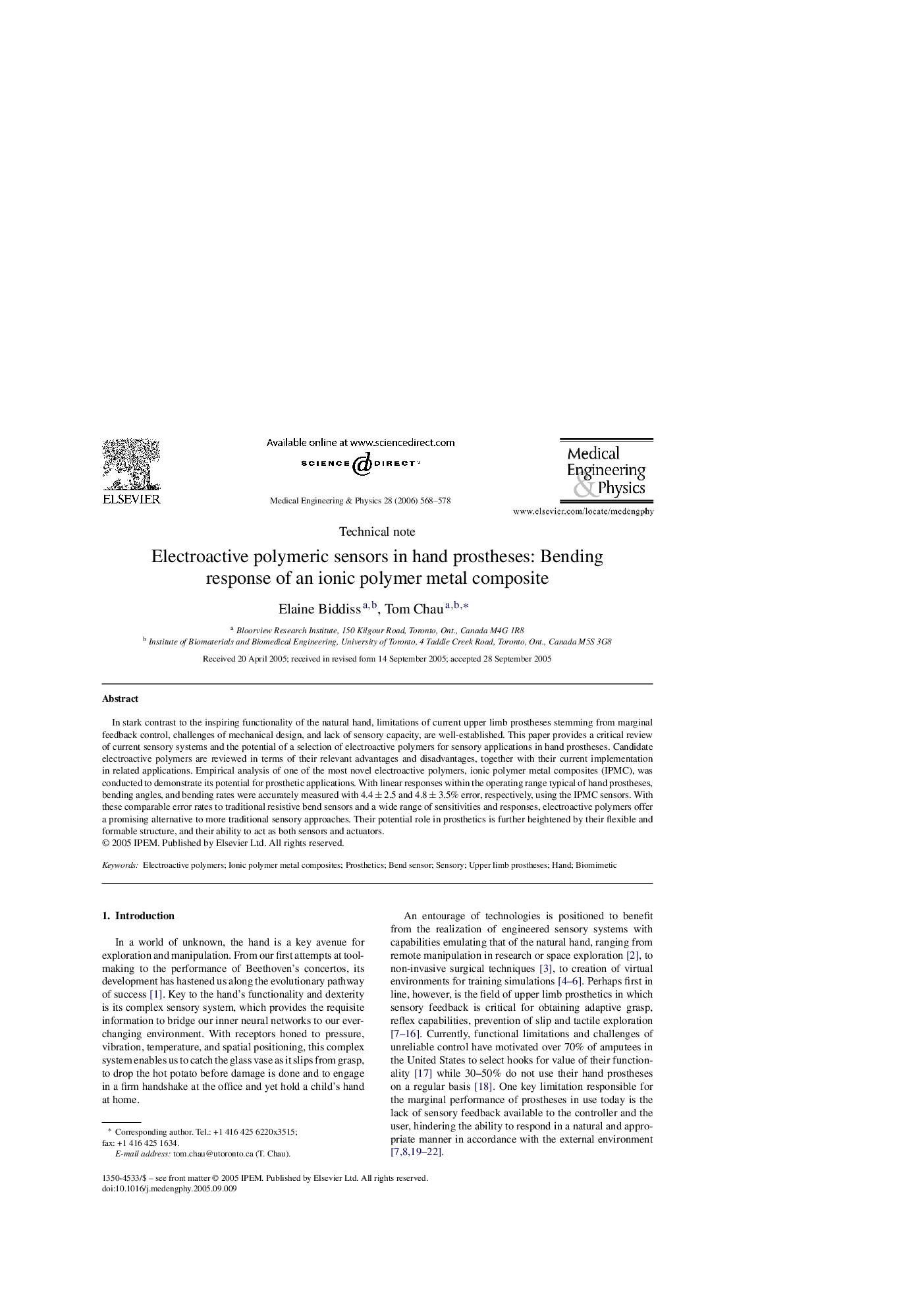| Article ID | Journal | Published Year | Pages | File Type |
|---|---|---|---|---|
| 877100 | Medical Engineering & Physics | 2006 | 11 Pages |
In stark contrast to the inspiring functionality of the natural hand, limitations of current upper limb prostheses stemming from marginal feedback control, challenges of mechanical design, and lack of sensory capacity, are well-established. This paper provides a critical review of current sensory systems and the potential of a selection of electroactive polymers for sensory applications in hand prostheses. Candidate electroactive polymers are reviewed in terms of their relevant advantages and disadvantages, together with their current implementation in related applications. Empirical analysis of one of the most novel electroactive polymers, ionic polymer metal composites (IPMC), was conducted to demonstrate its potential for prosthetic applications. With linear responses within the operating range typical of hand prostheses, bending angles, and bending rates were accurately measured with 4.4 ± 2.5 and 4.8 ± 3.5% error, respectively, using the IPMC sensors. With these comparable error rates to traditional resistive bend sensors and a wide range of sensitivities and responses, electroactive polymers offer a promising alternative to more traditional sensory approaches. Their potential role in prosthetics is further heightened by their flexible and formable structure, and their ability to act as both sensors and actuators.
